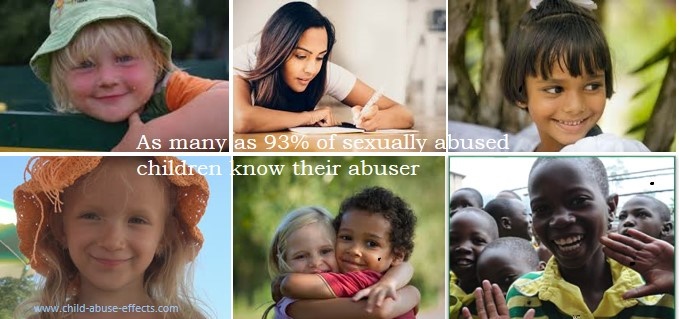Male Sex Offenders

Male sex offenders are notorious for rationalizing their criminal behavior and minimizing the number of sexual assaults they have committed.
 |
Male offenders were the perpetrators 96% of the time, according to an American study of 60,991 sexual assault victims (American Bureau of Justice Statistics Study, Snyder, 2000, p. 81). |
There are 3 categories of sex offenders:
- fixated offenders
- regressed offenders
- child rapist
Fixated Offenders:
The fixated offender has a primary sexual orientation towards children, especially male children; these sex offenders have commonly been called pedophiles. The typical pedophile is attracted to children both physically and emotionally. These offenders get a sense of power, control and omnipotence in their relationships with children.
Regressed Offenders:
 | The regressed offender is a non-pedophile molester. These male sex offenders are men who have achieved normal adult heterosexual functioning but who, in a time of crisis and stress, may seek out sexual activity with children and youth, in particular female children. They are not as compulsive or as demanding as pedophiles, but as incest offenders they may persist in having sexual activity with their children from an early age into adolescence (Wiehe, 1998, p. 652). |
Child Rapist:
 | The child rapist uses violence and assault to involve children. This group of sex offenders is categorized as the angry rapist, the power rapist or the sadistic rapist (The Family Violence Project, 1990, p. 1.333). |
 |
It is important to note that not all child molesters are driven by a sexual attraction to children (Lanning, 1992, p. 34). |
It is also important to note that many sex offenders have characteristics of both the fixated and regressed offender.
 |
The majority of sex offenders have multiple paraphilias (Murphy & Smith, 1996, p. 1775). |
Some Statistics on Male Sex Offenders
 |
A Canadian study of the backgrounds of adult male sex offenders found rates of physical abuse at 50% and sexual victimization at 70%. Almost 100% experienced emotional distancing in their father/son relationship (Graham, 1996, p. 1986). |
 |
A comparison study of 89 male sex offenders who received treatment and 89 who did not, found that the treated group had a recidivism rate of 23.6% while the untreated group had a recidivism rate of 51.7% (Looman, Abracen & Nicholaichuk, 2000, pp. 279-2907). |
 |
One study on risk factors revealed that male sex offenders were 3.5 times more likely to re-offend sexually if they had poor social skills, previous instances of sex-offending behaviour, one or more victims in their first convicted offence or a male victim in their first sexual offence (Langstrom & Grann, 2000, pp. 855-8718). |
 |
Studies by Haywood, Kravitz, Wasyliw, Goldberg and Cavanaugh in 1996 found that the odds of becoming a child molester were 5.42 times greater for adult male victims of childhood sexual abuse than for adult male non-victims (Lee, Jackson, Pattison & Ward, 2002, p. 889). |
 |
In 80% of the 30 occurrences of sexual abuse that were studied, sex offenders occupied community positions of trust. These male sex offenders were often well-known and respected for their work with children. In the other 20% of occurrences, offenders were friends and neighbours of the victims (B.C. Institute Against Family Violence, 2001, p. 3.10). |
<< Back to Sex Offenders
References
NOTE: Information pages on this site were based on material from the  Canadian Red Cross RespectED Training Program. Written permission was obtained to use their copyrighted material on this site.
Canadian Red Cross RespectED Training Program. Written permission was obtained to use their copyrighted material on this site.
1 Snyder, H. (2000, July), Sexual assault of young children as reported to law enforcement: Victim, incident, and offender characteristics. Retrived December, 2002, American Bureau of Justice Statistics Clearinghouse, http://www.ojp.usdoj.gov/bjs/ 312-314.
2 Wiehe, V (1998). Understanding family violence. Thousand Oaks, California: SAGE Publications, Inc.
3 Family Violence Prevention Project (1990). A handbook for the prevention of family violence. Hamiltion: The Community Child Abuse Council of Hamilton-Wentworth.Finkelhor & Williams, 1992, p. 60
4 Lanning, K. (1992). Child molesters: A behavioral analysis: For law enforcement officers investigating cases of child sexual exploitation. Virginia: Behavioral Sciences Unit, FBI Academy Quantico.
5 Murphy, W. & Smith, T. (1996). Sex offenders against children. In J. Briere, L. Berliner, J.A. Bulkey, C. Jenny & T. Reid (Eds.), The APSAC Handbook On Child Maltreatment 175-191. Thousand Oaks: SAGE Publications, Inc.
6 Graham, K. (1996). The childhood victimization of sex offenders: an under-estimated issue. International Journal of Offender Therapy and Comparative Criminology, 40(3), 192-203.
7 Looman, J., Abracen, J. & Nicholaichuk, T. (2000). Recidivism among treated sexual offenders and matched controls. Journal of Interpersonal Violence 15(3), 279-290.
8 Langstrom, L. & Grann, M. (2000). Risk for criminal recidivism among young sex offenders. Journal of Interpersonal Violence, 15(8), 855-871.
9 Lee, J., Jackson, H., Pattison, P., & Ward, T. (2002, January 26). Developmental risk factors for sexual offending. Child Abuse and Neglect, 26(1), 73-92.
10 B.C. Institute Against Family Violence. (2001). Multiple victim child sexual abuse. Child Maltreatment, 7, 3.
From Victim to Victory
a memoir
How I got over the devastating effects of child abuse and moved on with my life
From Victim to Victory
a memoir
How I got over the devastating effects of child abuse and moved on with my life
Most Recent
-
Converging Stolen Lives
Jan 30, 18 01:13 PM
There was a time and space I didn’t think about you, or your abuse. Where when I looked back at my life, I only saw normal things, a normal childhood. -
A letter to one of the 13 Turpin children
Jan 29, 18 11:33 AM
A heartfelt letter by a former classmate that speaks to bullying and regrets. You'll find it on my Facebook group. I hope you'll join and get in on the discussion. -
Dissociated From Abuse
Jan 29, 18 11:00 AM
I was sexually abused by my father from age 6 to 13, which stopped when I started talking about it during the day. The teenage brother of my best friend


